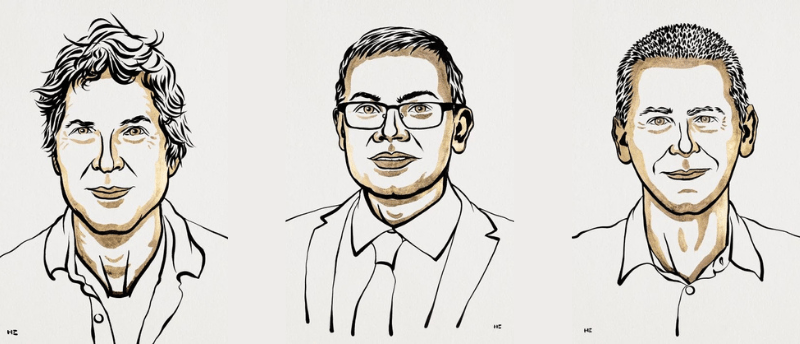Who won the 2024 Nobel Prize in Chemistry?

This year, the Nobel Prize in Chemistry has been awarded in half to David Baker (University of Washington, WA, USA) for computational protein design and half jointly to Demis Hassabis and John Jumper (both Google DeepMind, London, UK) for their creation of an AI model that can predict protein structure.
The power of proteins
Proteins are chemical tools central to life and can take the form of hormones, antibodies, enzymes, communication channels in cells and building blocks of tissues. For the wide range of functions and structures that proteins can embody within the human anatomy, they are generally created from a limited number of amino acids – 20 to be exact. However, these amino acids – linked together according to a DNA blueprint – then fold into complex 3D structures, each designed for a particular function.
This year’s Nobel Prize in Chemistry recognizes those researchers who have harnessed the potential of these 20 amino acids, developing methods to design and predict protein structures in all their complexity.
David Baker: designing proteins using computational techniques
Half of the Prize was awarded to David Baker, who – since 2003 – has been computationally creating entirely novel proteins. At the end of the 1990s, Baker developed Rosetta, a computer software that could predict protein structure when fed an amino acid sequence. The success of Rosetta inspired a new idea: using the software in reverse.
Although other groups were conducting protein design, they were typically altering existing proteins to elicit new functions; however, the number of natural proteins is limited. Baker’s group built their proteins from scratch, meaning the protein function possibilities are endless. Baker commented, “If you want to build an airplane, you don’t start by modifying a bird; instead, you understand the first principles of aerodynamics and build flying machines from those principles.”
Baker’s de novo design method worked by examining a new protein – drawn by researchers – and searching a database of protein structures to identify short fragments of proteins that had similarities to the desired structure. Rosetta was then able to optimize the fragments due to its knowledge of proteins’ energy landscape to propose an amino acid sequence.
The team tested Rosetta, introducing the gene for a proposed amino acid sequence of a novel protein to bacteria. Using X-ray crystallography, the team was able to confirm that the protein produced had almost exactly the same structure as the computationally designed protein.

© Nobel Prize Outreach.
Who won the 2024 Nobel Prize in Physiology or Medicine?
The Nobel Prize for Physiology or Medicine has been awarded to Victor Ambros and Gary Ruvkun for their discovery of microRNA – small, non-coding RNA molecules – and its role in gene regulation.
Demis Hassabis and John Jumper: the development of AlphaFold2
Since the 1970s, researchers have been trying to predict protein structure from amino acid sequence, which proved extremely difficult. It’s no surprise, then, that half of this year’s chemistry Prize was jointly awarded to Demis Hassabis and John Jumper for their development of AI model called AlphaFold2, which they presented in 2020, that can predict protein structure.
AlphaFold2 is the reformed model of AlphaFold, which was developed by Hassabis and initially demonstrated 60% accuracy when predicting protein structure. When Jumper joined Google DeepMind in 2017, he brought with him a wealth of protein simulation experience. The two co-led the work that reformed AlphaFold, implementing the use of transformers – neural networks that can flexibly find patterns in enormous datasets – the pair were able to increase the accuracy to 90%, roughly on par with experimental accuracy for protein structural determination.
Using AlphaFold2, they have virtually predicted the 200 million proteins identified by researchers to date. Additionally, Google DeepMind has made AlphaFold2 publicly available; two million people have used AlphaFold2 to propel their own research. AlphaFold2 has several applications, being utilized for understanding antibiotic resistance and plastic-decomposing enzymes.
Computation at the core
Thanks to computational tools, processes like protein prediction that used to take many years, now only take a few minutes. The development of these computational tools has changed the landscape of protein research. From the development of new nanomaterials and targeted therapeutics to minimal sensors and greener industrial practices, the ability to design and predict protein structure offers great benefit to humanity.